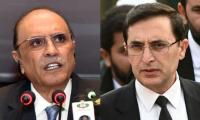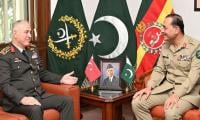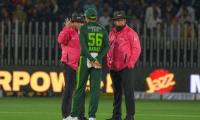As expected, hardline conservative Ebrahim Raisi won the June 18 presidential elections in Iran. There was no real contest in the elections since no strong reformist candidate was contesting the elections. It was a walkover for Raisi.
What is seen as the ‘hardline faction’ in the country now controls the executive, judiciary and legislature. In 2020, the conservatives roughly three-quarters of the 290 seats in parliament. On the other hand, the reformist movement continues to lose support and credibility among working people and the youth. President Rouhani failed to deliver the promises he had made during his reelection campaign. There were high hopes among Iranians that a nuclear deal with six world powers would help ease the US-led sanctions and improve the economic situation.
But Trump’s decision to abandon the nuclear deal and to impose even harsher sanctions left no room for Rouhani to offer something to the people. The worsening economic situation made him unpopular. When Rouhani leaves office, the reformist movement in Iran will be left without an obvious leader. Continued repression has also weakened the movement.
The official figure for the turnout this election was 48.8 percent. Raisi won with 61.9 percent of votes. Blank or spoiled votes were 12.8 percent – at least triple the number of invalid votes in all other elections since 1980. The unprecedented percentage of spoiled ballots, which exceeded votes for the runner-up, suggested that many of them were protest votes.
Mohsen Rezaei, a hardliner and former Revolutionary Guard commander who has run for president four times, polled 11.8 percent. Abdolnasser Hemmati, a centrist and the former Central Bank chief appointed by President Hassan Rouhani, took 8.4 percent. Amir Hossein Ghazizadeh Hashemi, a hardliner and current member of parliament, polled 3.5 percent.
The turnout was low in the major cities and higher in rural areas, especially conservative regions. The turnout was historically low in Tehran where only 26 percent of voters went to the polling stations.
Raisi did win an overwhelming majority of the votes polled. But only 48.8 percent (28.9 million) of Iranian voters went to the polling stations, the lowest turnout in the history of the Islamic Republic. Raisi bagged around 18 million votes from a 59.3 million strong electorate.
In 2017, 41 million voted, a 73 percent turnout, and the ‘reformist’ Rouhani was reelected with 23 million votes, which was 57 percent of the polled votes. The turnout was 72.9 percent in the 2013 presidential elections.
This time, in Tehran, just 26 percent voted, compared with 72.9 percent in 2013 and 73.3 percent in 2017. The turnout was 72.9 percent in the 2013 presidential elections.
While Raisi is supported by the conservative establishment, he does not enjoy the popular support his predecessors used to enjoy – unlike reformist Khatami and Rouhani and even rightwing populist Ahmadinejad who won with mass support and high hopes in some sections of the population. Despite the victory, Raisi will lack broad public mandate when he takes office in August.
This regime had already faced two protest movements in the last three years and industrial struggles have also been on the rise in the last few years. The conservative regime is not ready to allow the development of a situation like the Green Movement of 2009.
Living conditions are forcing young people and workers to go out on the streets to demand improvements in their lives. The regime is under pressure to deliver and improve the living conditions because of the worsening economic situation. And in this, US-led sanctions are a central factor since they have exacerbated the economic crisis.
The Raisi presidency will face many challenges as soon as he assumes power in August. The first challenge will be to revive the economy, which has been in recession for the last three years.
The IMF says the GDP fell by more than six percent in both 2018 and 2019, and only returned to modest growth last year. Unemployment has risen, the currency has collapsed and the Iranian Rial has lost 80 percent value, and prices have soared amid the persistent inflation.
Inflation has rocketed since 2017 and is currently around 46 percent. Alongside this, large-scale unemployment has continued; youth unemployment has averaged 22 percent over the eight years of Rouhani’s tenure. Apart from the serious economic issues, there have been movements against oppression, for democratic rights and, increasingly, against an authoritarian ruling elite.
The second challenge is to lift or at least ease the US sanctions and to end the isolation of Iran both politically and economically. Without restoring the nuclear deal, it will be hard to lift or ease the sanctions imposed by the US. The regime desperately needs to end or ease the sanctions. It will provide a breather to provide some relief to the people.
It will be hard for Raisi to deliver without overcoming the economic crisis. Without this, it will not be possible to hold back protest movements and industrial actions.
Over 60 percent of Iran’s 80 million people are under 30 years of age. Iran needs at least one million jobs every year to provide jobs to young people but at the current rate of growth, it only creates 0.3 million jobs.
American sanctions and flawed policies of privatisation, austerity and neoliberalism have increased poverty, unemployment and economic hardships for the people of Iran. If Raisi fails to deliver and improve the lives of millions of Iranian people, the regime is likely to find itself in a bigger crisis – the crisis of legitimacy.
The writer is a freelance journalist.
India uses Afghanistan as a backstage area to carry out terrorist attacks against Pakistan
Another report by the Pakistan Institute of Peace Studies states that 78 per cent of attacks have been carried out by...
Pakistan stands at the forefront of this crisis, generating a staggering 3.3 million tonnes of plastic waste annually
Today, a total of 11,000 children are attending Daanish schools in Punjab
The emotional instability of parents inculcates a range of psychological issues in children
The current way of dealing with the environment and climate change is no longer adequate







